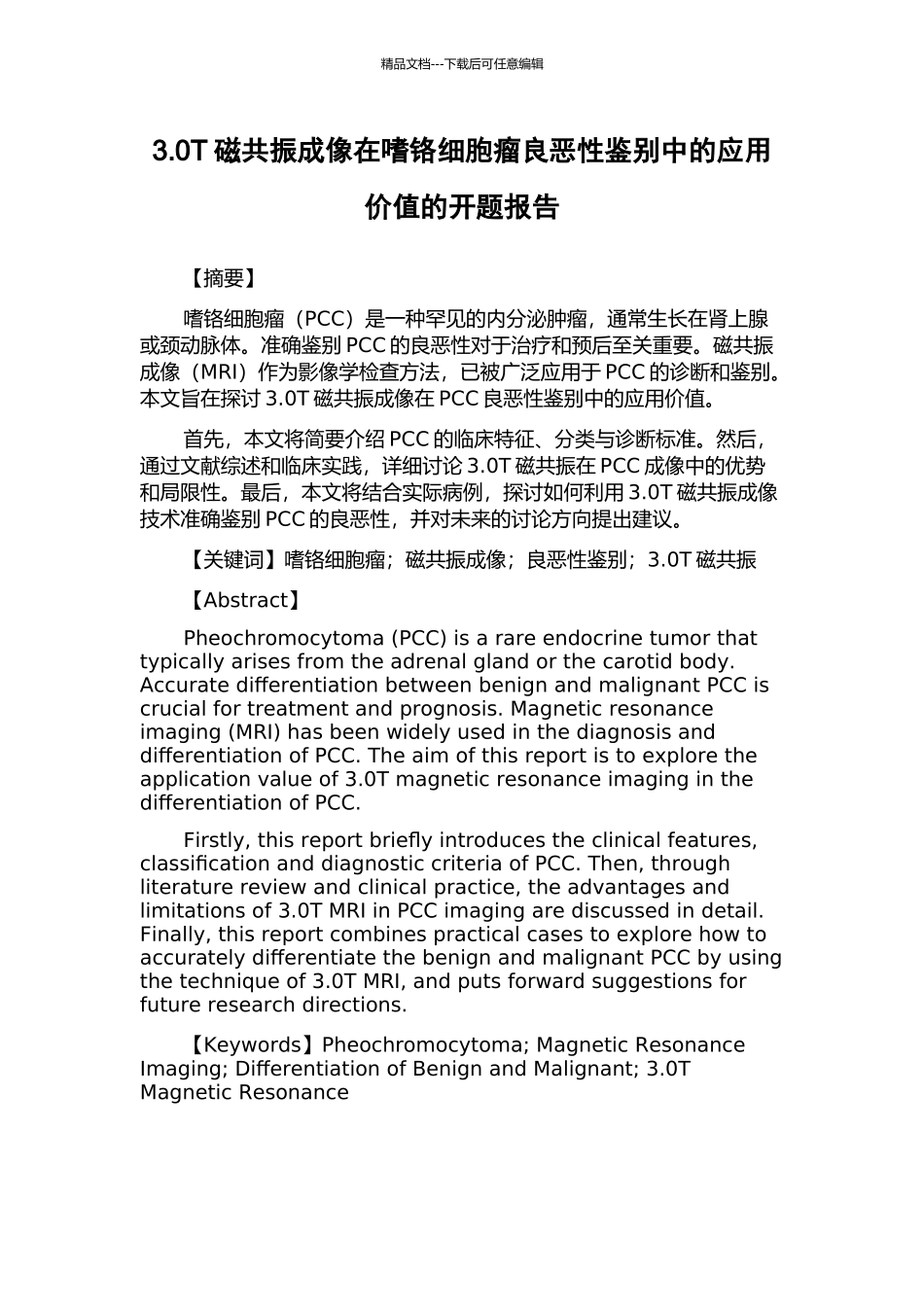精品文档---下载后可任意编辑3.0T 磁共振成像在嗜铬细胞瘤良恶性鉴别中的应用价值的开题报告【摘要】嗜铬细胞瘤(PCC)是一种罕见的内分泌肿瘤,通常生长在肾上腺或颈动脉体。准确鉴别 PCC 的良恶性对于治疗和预后至关重要。磁共振成像(MRI)作为影像学检查方法,已被广泛应用于 PCC 的诊断和鉴别。本文旨在探讨 3.0T 磁共振成像在 PCC 良恶性鉴别中的应用价值。首先,本文将简要介绍 PCC 的临床特征、分类与诊断标准。然后,通过文献综述和临床实践,详细讨论 3.0T 磁共振在 PCC 成像中的优势和局限性。最后,本文将结合实际病例,探讨如何利用 3.0T 磁共振成像技术准确鉴别 PCC 的良恶性,并对未来的讨论方向提出建议。【关键词】嗜铬细胞瘤;磁共振成像;良恶性鉴别;3.0T 磁共振【Abstract】Pheochromocytoma (PCC) is a rare endocrine tumor that typically arises from the adrenal gland or the carotid body. Accurate differentiation between benign and malignant PCC is crucial for treatment and prognosis. Magnetic resonance imaging (MRI) has been widely used in the diagnosis and differentiation of PCC. The aim of this report is to explore the application value of 3.0T magnetic resonance imaging in the differentiation of PCC.Firstly, this report briefly introduces the clinical features, classification and diagnostic criteria of PCC. Then, through literature review and clinical practice, the advantages and limitations of 3.0T MRI in PCC imaging are discussed in detail. Finally, this report combines practical cases to explore how to accurately differentiate the benign and malignant PCC by using the technique of 3.0T MRI, and puts forward suggestions for future research directions.【Keywords】Pheochromocytoma; Magnetic Resonance Imaging; Differentiation of Benign and Malignant; 3.0T Magnetic Resonance
